Cavers and Climate change
2016
Wookey
<wookey@wookware.org>
Why?
This talk may be controversial - you may find it somewhat depressing. We'll get to that.
I'm going to come at this backwards:
First we'll just look at the footprints of caving. I'll explain why it matters in a few mins, so just bear with me for now.
Carbon Footprinting is measuring emissions from activities.
Done in CO2e.
Lets do some sums
Caving itself is pretty-much zero-carbon
but...
- Equipment
- Travel
Equipment
- Rope (nylon)
- Metalwork (hangers, jammers, crabs) (aluminium)
- Harness, slings (nylon)
- Helmets (ABS)
- Fleece (acrylic)
- Cordura oversuit (nylon)
- PVC oversuit, tacklesacks (PVC)
- Kneepads, Wetsuits (neoprene)
- Light, battery (electronics/plastic/aluminium)
Life Cycle
Assessments
Good data from Edelrid: Rope is 0.05Kg/m
Everything else is very approximate
Petzl do have numbers but unpublished
Used general nylon, aluminium, steel, PVC, neoprene numbers with some manufacturing fudge factors.
Manufacture
Much better in France (150gCO2e/kWh)
than Malaysia (750gCO2/kWh) (Factor of 5)
Gas process heat (180gCO2e/kWh) much better than electrical (500-950) (except in France, Costa Rica and Uruguay)
- Aluminium: 12.9KgCO2e/Kg
- Nylon cloth: 1KgCO2e/Kg
- PVC: 3.5KgCO2e/Kg
- Neoprene: 4KgCO2e/Kg
- Electronics: 50KgCO2e/Kg
Caving Kit
- Basic set: 61Kg
- Full set with 100m of rope: 87Kg
Variable lifetimes
Ballpark-tastic: use Wook-based numbers.
| Gear | Replacement time |
|---|---|
| Crab | 20 |
| Harness | 10 |
| Oversuit | 4 |
| Kneepads | 6 |
| Helmet | 15 |
| Stop Bobbin | 3 |
| Battery | 5 |
| Undersuit | 10 |
Footprint/yr
Annual embedded CO2e
- Basic set: 10Kg/yr
- Full set with 100m of rope: 13Kg/yr
Remember those numbers.
Travel
Individual Travel, one way
- Leeds -> Yorkshire Car 10Kg
- London -> Yorkshire Car 48Kg
- Cambridge -> Ardeche Car 121Kg
- Cambridge -> Austria Car 138Kg
- Cambridge -> Mulu Plane 915Kg
Ardeche Austria
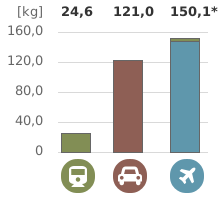
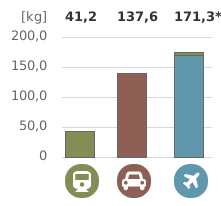
Trains, coaches and 3-people-per car is good.
Planes and solo-cars aren't.
Caver types
- Caving monthly locally:
12 trips, 10 miles. - Local caver digging/caving weekly:
48 trips, 10 miles. - Caving monthly from Cambridge:
12 trips, 200 miles. - European Expedition:
1 trip, 900 miles. - Asian Expedition:
1 trip, 7328 miles.
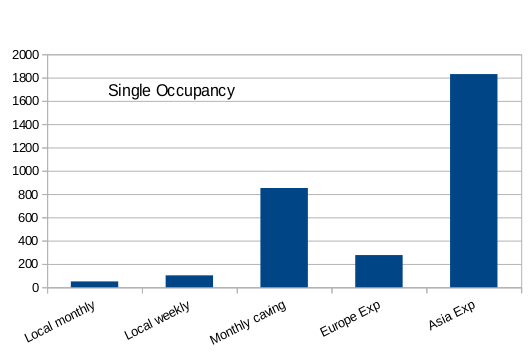
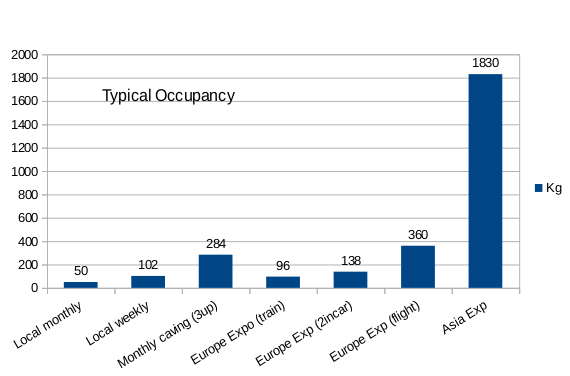
- Equipment: 13Kg
- Travel: 50-2000Kg
Gear footprint is small.
It's all about transport: cave nearby for reduced emissions.
Context
- Average UK footprint: 6.5T
- Imported stuff: 3T
- Car Commuting 20 miles to work: 2T
- Heating average house (gas): 3T
- Share of govt,defence, schools: 2.5T
- Food: 0.4-1.5T
Why does this matter?
1-slide science
CO2 was 278ppm 200 years ago. Now 404ppm and rising.
Takes 1000-odd years to get it out of the atmosphere.
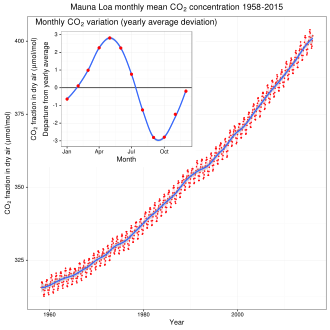
Other GHGs matter too, (but this talk too short...)
Climate change problem has been understood for 25 years - nothing major has changed since 1990.
It is a cumulative problem.
What are total emissions and what atmospheric CO2 level do we end up at?
What we say
Copenhagen Declaration
(and Camp David, Cancun, Doha, Warsaw, etc)
Committed to 'hold increase in global temp below 2C, and take action to meet this objective consistent with science, and on basis of equity'
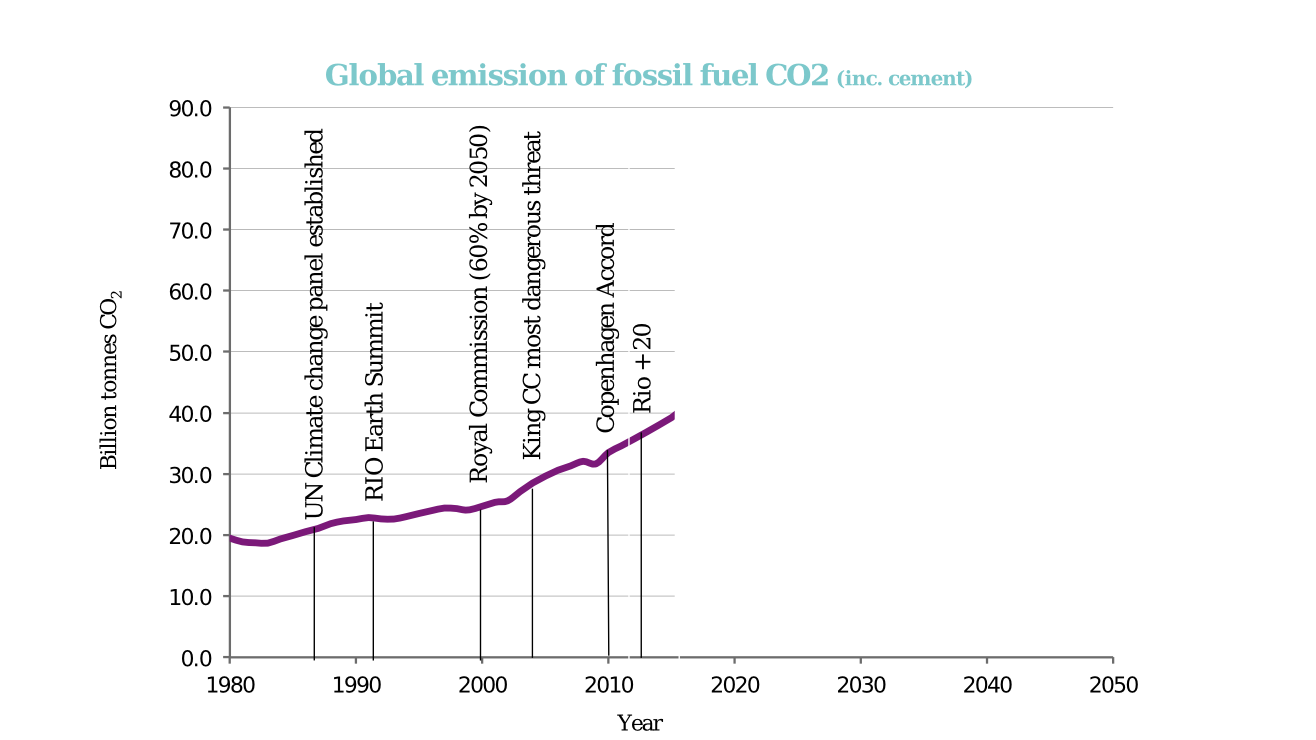
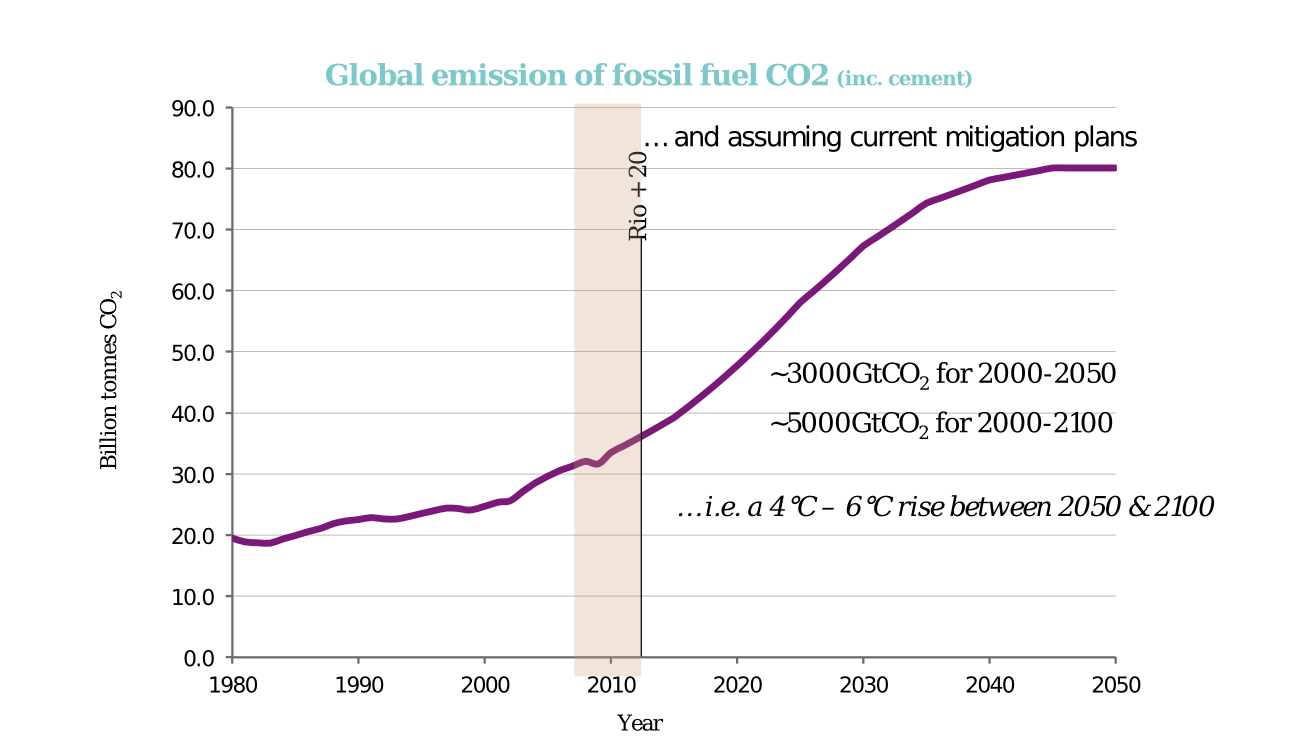
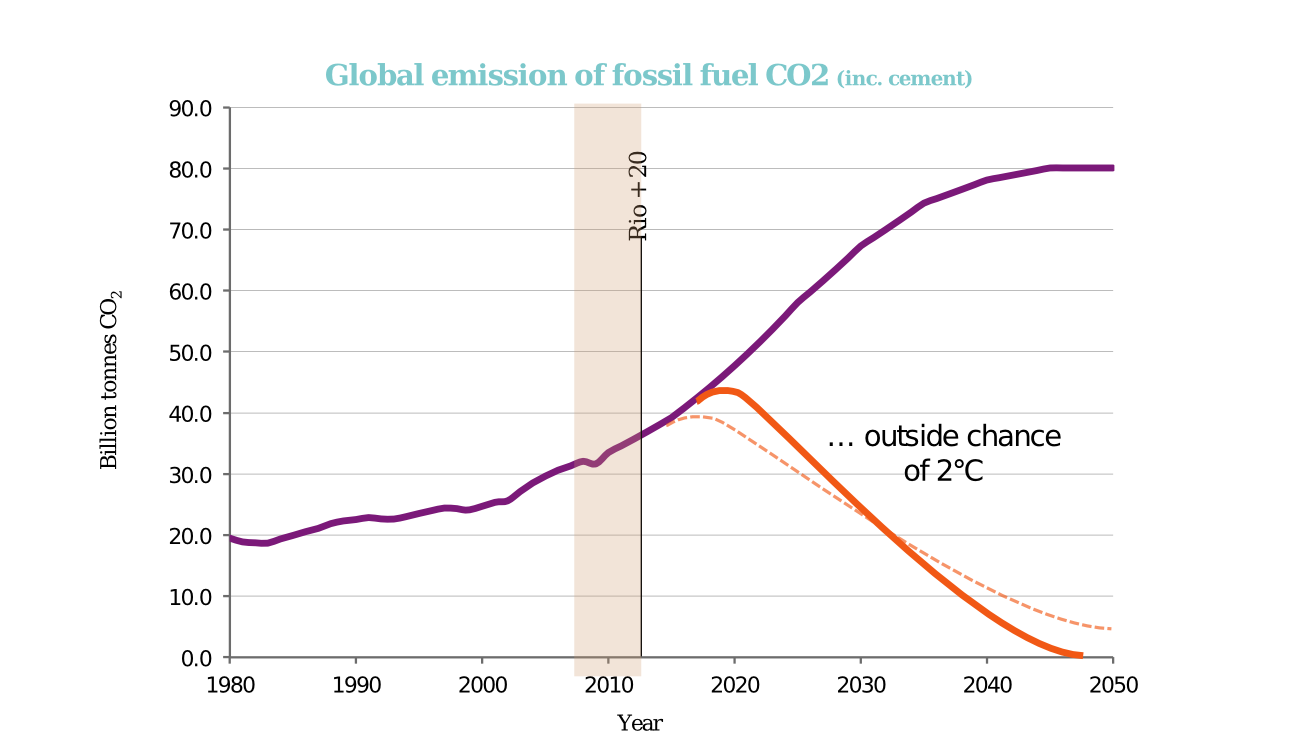
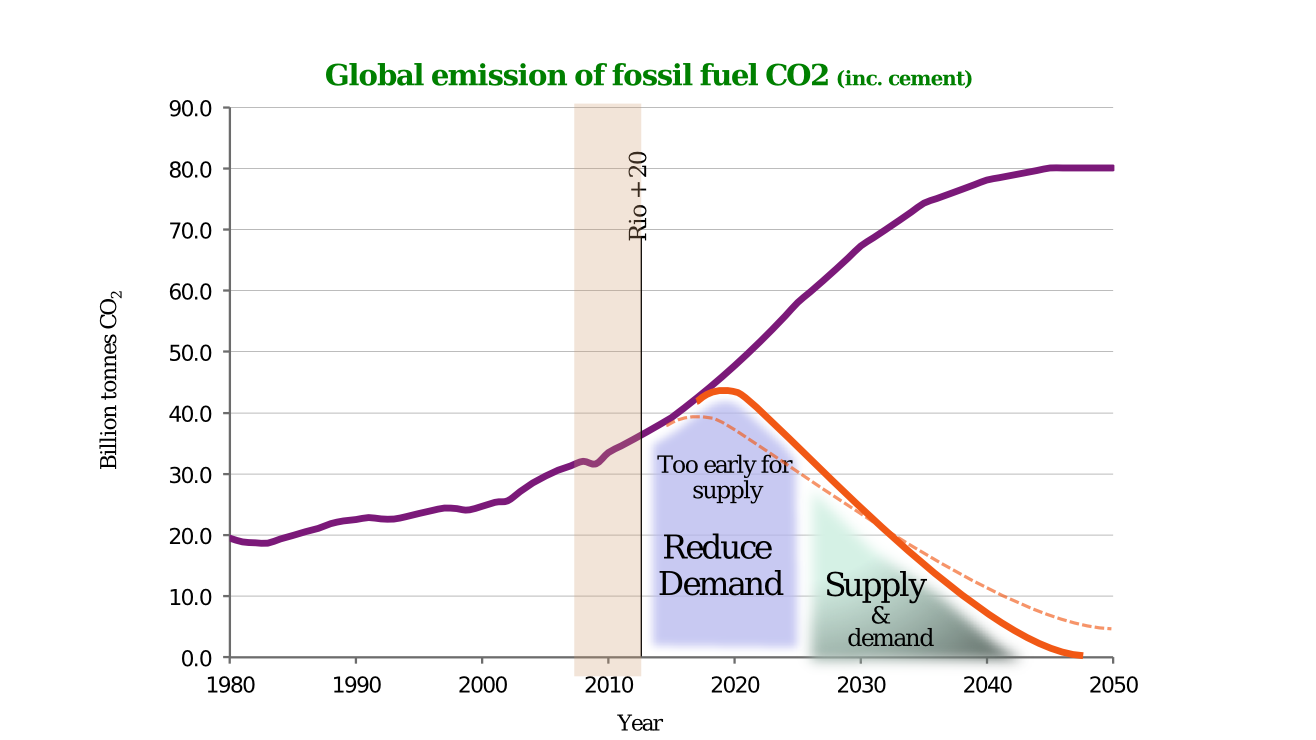
Carbon Budget
For under 2C, from IPCC:
| Probability | 66% | 50% | 33% |
| Gigatonnes CO2e | 1000 | 1300 | 1500 |
- That's from 2011. We used 160Gt since then already.
- Land use changes 2015-2100 are another 100Gt.
- Cement 2015-2100 is another 150Gt.
Carbon Budget Remaining
| Probability | 66% | 50% | 33% |
| Gigatonnes CO2e | 1000 | 1300 | 1500 |
| Available now | 600 | 900 | 1100 |
| = Years | 16 | 23 | 28 |
If poorer countries get some budget for development
(assume peak in 2025)
2°C mitigation requires (for Annex 1/OECD nations):
10% reduction in emissions year on year, i.e.
- ~40% reduction by ~2018 (c.f. 1990)
- ~70% ~2024
- ~90% ~2030
i.e Nothing like the 80% by 2050 of the UK Climate Change Act
And non-marginal reductions considered 'impossible'.
4C average is 5-6C over land, 8-10C in Arctic.
OK, so 2C is too hard
What about 4C?
There is a widespread view that 4°C is:
- incompatible with an organised global community
- beyond ‘adaptation’
- devastating to eco-systems
- Effects are built-in now. Antarctic destabilisation already done.
- highly unlikely to be stable (‘tipping points')
... consequently ...
4°C should be avoided at ‘all’ costs
50% of emissions come from <10% of the people.
That's us
- Academics
- Anyone who gets on a plane once/yr
- Anyone paid £30K or more
- Politicians
Mitigation is a consumption issue, not a population issue.
Why don't you hear this?
Nobody wants to hear this.
'growth' is sacred.
BECCS is assumed.
For policy makers the message is simple but uncomfortable
- Should avoid 4°C at all costs
- Annex 1 nations need ~70% decarbonisation over next decade or so
- Only small % of global population need radical mitigation
- Low carbon energy supply is too little too late in the West
- Principal response is to reduce energy demand now
- Carbon trading & prices are not sufficient for non-marginal (large) reductions
Is it hopeless?
No, not yet, but it's not good.
Action from the rich (you) is necessary, and we don't like that.
Change is possible
Footprint yourself
Change your travel
Change your diet
Enerphit your house: 80% heating reduction
PV, Divest
Invest
Vote for people that take this seriously
Campaign, march, write, donate
Talk to friends and family
Do it right now, not next year.
CREDITS
This presentation borrows heavily from Kevin Anderson's excellent work.
Kevin Anderson - 'Evolution or Revolution' Kevin Anderson - 'The Ostritch or the Phoenix'